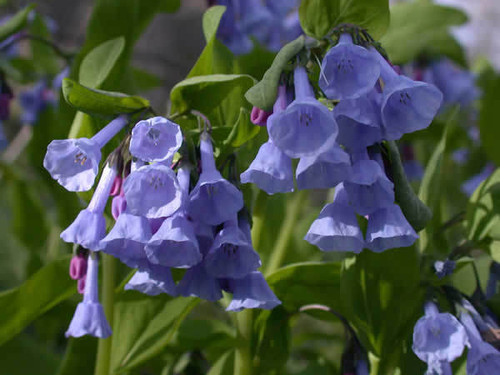Blue-eyed grass - bare root plug
Blue-eyed grass (Sisyrinchium spp.) is a common name for a group of flowering plants in the iris family, Iridaceae. Despite its name, blue-eyed grass is not an actual grass but rather a perennial herbaceous plant that is native to North and South America. These plants are known for their small, delicate flowers that resemble tiny irises and have a striking blue or violet color. The "blue-eyed" part of their name comes from the distinctive blue or yellow central "eye" on each flower.
Blue-eyed grass plants typically grow in grasslands, meadows, and open woodland areas. They have slender, grass-like leaves and produce small flowers on branched stems. The flowers range from blue to purple, and there are different species and varieties with slight variations in appearance.
These plants are valued for their ornamental qualities and are often grown in gardens for their attractive and dainty appearance. They are relatively low-maintenance and can be a charming addition to a wildflower garden or a naturalized area.
Blue-eyed grass plants can be propagated from seeds or by dividing established clumps. Depending on the species, they may bloom in the spring or early summer, adding a touch of color to the landscape.
Bleeding hearts (Dicentra spectabilis) are beautiful perennial plants known for their unique and distinctive heart-shaped flowers. Caring for bleeding hearts is relatively straightforward, and here are some essential tips to help you care for them:
- Planting:
- Choose a well-drained, partially shaded to fully shaded location for your bleeding hearts. They prefer dappled sunlight.
- Soil:
- Bleeding hearts thrive in rich, moist, and loamy soil. Ensure the soil is well-draining to prevent soggy conditions that can cause root rot.
- Watering:
- . Water your bleeding hearts regularly, but avoid overwatering, as they don't tolerate soggy soil well. Mulch around the bottom of the plants to help retain moisture.
- Fertilization:
- You can feed your bleeding hearts with a balanced, slow-release fertilizer in early spring when they emerge. Follow the product's instructions for application rates.
- Pests and Diseases:
- Bleeding hearts are generally pest and disease-resistant. However, they can be susceptible to slugs and snails, which may feed on the tender foliage. Use organic methods or slug and snail baits to protect your plants if necessary.
- Winter Care:
- In the fall, once the foliage has died, you can cut the plant back to the ground to prepare it for winter. Mulch around the base of the plant to protect it from extreme cold.
- Division:
- Bleeding hearts can become crowded over time. To rejuvenate the plant and prevent overcrowding, divide it in early spring or fall. Dig up the plant, divide the roots, and replant the sections in a well-prepared site.
- Support:
- Tall bleeding heart varieties may require support to keep them upright, especially in full bloom. You can use stakes or other support structures to prevent them from flopping over.
Remember that bleeding hearts go dormant in the summer, so don't be alarmed if they die back and appear gone during this time. They will re-emerge in the following spring.
By following these care guidelines, you can enjoy the beauty of bleeding hearts in your garden year after year.
FAQ
1. Is it easy to grow blue-eyed grass from seed?
A. Blue-eyed grass (Sisyrinchium spp.) is a relatively low-maintenance plant, and growing it from seed can be a straightforward process.Remember that germination success can vary, and some seeds may take longer to sprout. Additionally, some species of blue-eyed grass may have specific requirements, so it's a good idea to check for any specific guidelines for the particular species you are growing.
2. Where does blue-eyed grass grow best?
A. Blue-eyed grass typically thrives in open, sunny habitats and well-drained soils. It can be found in a variety of ecosystems, including meadows, prairies, open woodlands, and along roadsides.









